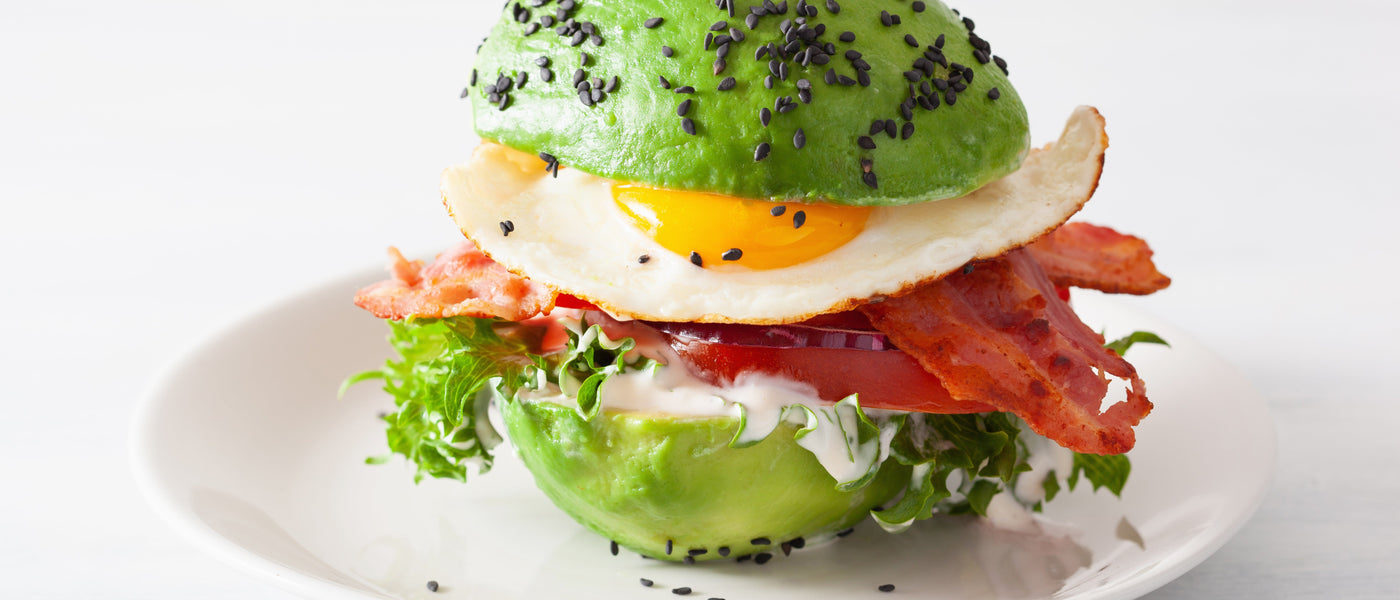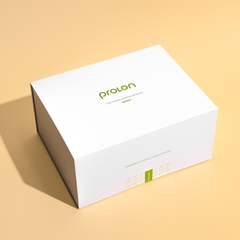
Paleo Diet vs. Fasting Mimicking Diet: Which is Better for Weight Loss?
The Paleo Diet and Fasting Mimicking Diet (FMD) are two popular approaches to weight loss, each offering unique benefits. The Paleo Diet emphasizes daily eating like our ancestors,, with a focus on whole, unprocessed foods, while the FMD is a five-day plan that mimics the effects of fasting without requiring complete food abstinence. Both have their merits, but which one is better suited to your weight loss goals? This article will explore the differences between to help you make an informed decision.
What is the Paleo Diet?
The Paleo Diet, often called the "caveman diet," encourages eating whole foods that were presumably consumed during the Paleolithic era. It excludes processed foods, grains, dairy, and refined sugars, focusing instead on meats, fish, fruits, vegetables, nuts, and seeds.
By aligning modern eating habits with the diet of early humans, proponents believe the Paleo Diet supports better health and natural weight management.
How the Paleo Diet Works
The Paleo Diet operates on the principle of eliminating modern, processed foods and focusing on nutrient-dense, whole food options. By avoiding grains, legumes, and dairy, the diet seeks to reduce inflammation, stabilize blood sugar levels, and improve overall health. High protein intake is also a hallmark of this diet, as it helps maintain muscle mass and promotes satiety.
This dietary shift often results in reduced calorie consumption due to the elimination of calorie-dense, nutrient-poor processed foods.
Health Benefits of the Paleo Diet
-
Weight Loss: The Paleo Diet naturally limits calorie intake by focusing on whole foods that promote fullness and reduce cravings. This can lead to steady weight loss over time.
-
Improved Blood Sugar Control: Eliminating refined carbohydrates and sugars helps stabilize blood sugar levels, reducing the risk of insulin resistance and type 2 diabetes.
-
Anti-Inflammatory Effects: By emphasizing anti-inflammatory foods like vegetables, fruits, and healthy fats, the Paleo Diet may help reduce chronic inflammation, which is linked to obesity and other diseases.
-
Enhanced Nutritional Quality: A focus on nutrient-dense foods improves overall dietary quality and supports better health outcomes.
Challenges of the Paleo Diet
-
Restrictive Nature: Excluding entire food groups such as grains, legumes, and dairy can make the diet feel overly limiting and may lead to nutrient deficiencies if not carefully planned (Dietetically Speaking).
-
Cost: Prioritizing organic, grass-fed, and wild-caught foods can become expensive, making the diet less accessible for some people.
-
Social Limitations: Following the Paleo Diet in social settings can be challenging due to the lack of compliant options, which may feel isolating over time.
What is the Fasting Mimicking Diet?
The Fasting Mimicking Diet is a short-term dietary program designed to replicate the benefits of fasting while still allowing minimal food intake, supporting weight loss, healthy metabolic markers, and cellular rejuvenation Over five days, participants consume a low-calorie, plant-based meal plan designed to trigger the body’s fasting responses. Programs like Prolon’s 5-Day Fasting Mimicking Diet provide pre-packaged meals that make it easy to follow.
How the Fasting Mimicking Diet Works
During the five-day program, participants consume 750–1,100 calories per day through foods that stay under the nutrient-sensing pathways so the body still thinks it is fasting. This mimics the effects of traditional fasting, initiating processes such as:
-
Ketosis (Fat Burning): The body depletes glycogen stores and shifts to using fat for energy.
-
Autophagy (Cellular Repair): A process of cellular cleanup that removes, repairs, or recycles old, damaged cells.
-
Cellular Reprogramming and Rejuvenation: Damaged and dysfunctional cells are replaced with younger, higher-functioning ones.
Health Benefits of the Fasting Mimicking Diet
-
Fat-Targeted, Sustained Weight Loss
The FMD supports weight loss, particularly in hard-to-target areas like visceral fat. -
Healthy Metabolic Markers
This program supports healthy metabolic markers, including blood sugar levels and insulin sensitivity. -
Cellular Rejuvenation
Autophagy helps remove damaged cells, making the way for new, healthier ones - shown to contribute to longevity and overall wellness. -
Convenience
The pre-packaged meals simplify adherence, making it easier to complete the five-day program than traditional fasting.
Why FMD Could Be a Better Weight Loss Solution
The Fasting Mimicking Diet supports sustained, fat-focused weight loss in just five days. It is particularly appealing to those seeking an effective, short-term intervention that doesn’t require the long-term restrictions of other diets. Its scientific backing and focus on cellular rejuvenation make it a standout choice for individuals looking for both weight loss and general wellness.
Key Differences Between Paleo Diet and Fasting Mimicking Diet
While both diets can support overall health and weight loss, their approaches and long-term impacts differ significantly.
Dietary Focus and Restrictions
The Paleo Diet focuses on eliminating modern foods and prioritizing whole, unprocessed options. It excludes grains, legumes, and dairy, requiring careful meal planning. In contrast, the Fasting Mimicking Diet is a short-term, highly structured plan that restricts calories for just five days, allowing participants to return to their regular eating habits afterward.
Flexibility and Sustainability
The Paleo Diet requires ongoing adherence, which can be challenging for those who prefer variety or have busy lifestyles. The Fasting Mimicking Diet, on the other hand, is an intervention that only requires five days, designed to be repeated three times yearly (after an initial on-boarding of three consecutive monthly cycles) - making it easier to incorporate into a busy lifestyle without requiring long-term restrictions.
Health and Longevity Benefits
While the Paleo Diet improves metabolic health and reduces inflammation through whole foods, it does not trigger the cellular rejuvenation processes (like autophagy) that the Fasting Mimicking Diet may. For individuals seeking both weight loss and longevity benefits, the Fasting Mimicking Diet can provide an added advantage.
Conclusion: Make an Informed Choice for Your Weight Loss Goals
Both the Paleo Diet and the Fasting Mimicking Diet offer unique advantages for weight loss and health. The Paleo Diet is a sustainable lifestyle choice that focuses on whole foods and long-term dietary changes. In contrast, the Fasting Mimicking Diet can provide a powerful, short-term solution for faster weight loss and cellular rejuvenation. If you value convenience, a scientifically-backed program, and quick results, the Prolon 5-Day Fasting Mimicking Diet may be the better option for your weight loss journey.
Explore Prolon’s program and start your journey today.
References
-
NIH. Health effects of a diet that mimics fasting. NIH Research Matters.
https://www.nih.gov/news-events/nih-research-matters/health-effects-diet-mimics-fasting -
U.S. News & World Report. What is the fasting mimicking diet? U.S. News.
https://health.usnews.com/wellness/food/articles/what-is-the-fasting-mimicking-diet -
The Paleo Diet. How the Paleo Diet fights inflammation. The Paleo Diet.
https://thepaleodiet.com/how-the-paleo-diet-fights-inflammation -
BMC Cardiovascular Disorders. Metabolic and cardiovascular effects of the Paleo Diet: A systematic review. Cardiovascular Diabetology.
https://cardiab.biomedcentral.com/articles/10.1186/1475-2840-8-35 -
Healthline. Paleo diet for weight loss: What to know. Healthline.
https://www.healthline.com/nutrition/paleo-diet-for-weight-loss -
The Paleo Diet. How the Paleo Diet fights inflammation. The Paleo Diet.
https://thepaleodiet.com/how-the-paleo-diet-fights-inflammation - Mayo Clinic. Paleo diet: What is it and why is it so popular? Mayo Clinic Health.
https://www.mayoclinic.org/healthy-lifestyle/nutrition-and-healthy-eating/in-depth/paleo-diet/art-20111182












